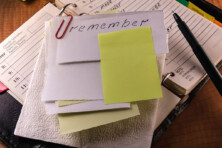Here are some tips on detecting counterfeit pounds
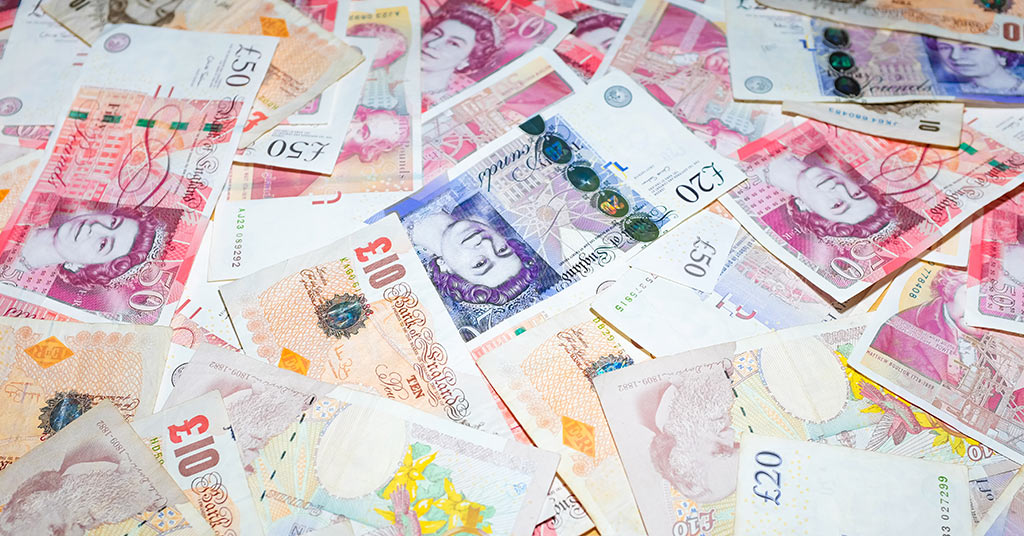
How to detect counterfeit pounds. Source: shutterstock.com
Did you know that 1 in every 5,000 banknotes in the UK is counterfeit? That is according to the official data, which is able to reveal only those cases that were reported to the police and relevant authorities. In 2009, the Bank of England announced the statistics of 566,000 counterfeit notes in the UK. Of these, 95% were twenty-pound notes. Why is it important?
Cash usage statistics
Cashless transactions are dominating in the British payment landscape. In 2016, only 40% of all payments were made using cash, and the next year the number steeply fell to 34%. The same year just about £2,7 billion got withdrawn from national ATMs.
Nevertheless, there is still a large population sector who relies predominantly on cash in their daily transactions. Mostly, they are people whose household income is below the £15.000 threshold. In 2017, about 2.2 million customers chose cash over a debit card in their daily shopping. Partially, that is because some daily products can be bought at cheaper prices from local market sellers who don’t own payment terminals. Other reasons for preferring cash might include high-interest rates and bank fees applied to credit cards, elderly people’s unwillingness to master new technologies, easier ways to plan a monthly budget, not to mention illegal uses in the so-called “shadow” economy.
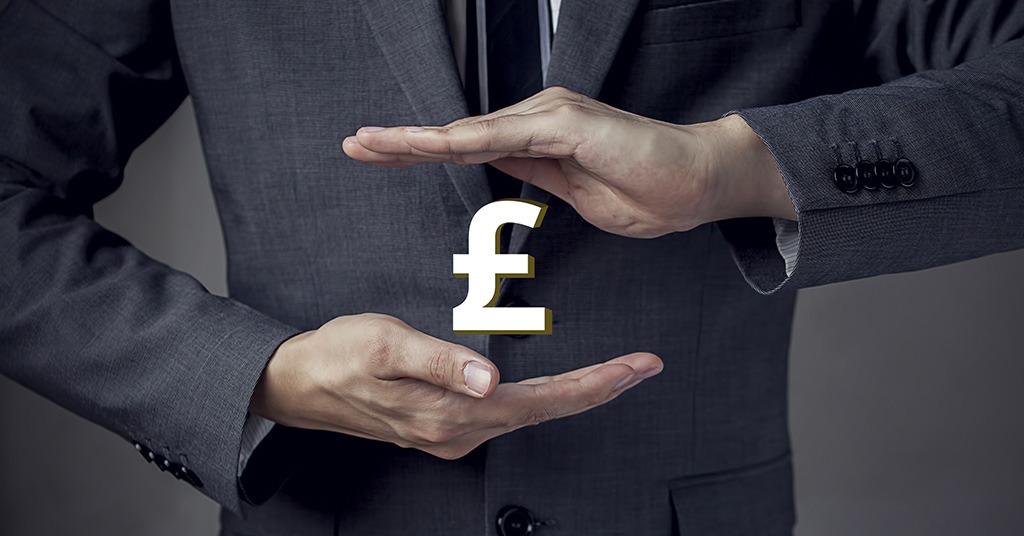
Cashless transactions are dominating in the British payment landscape. Source: shutterstock.com
Despite the decline of cash transactions, the factors mentioned above will not let traditional banknotes and coins completely vanish anytime soon. In fact, over the last 10 years, the number of pound sterling banknotes doubled.
Currently, there are over 3.6 billion Bank of England notes in circulation worth about 70 billion pounds. Ranking in the top three most cashless societies in the world, many UK citizens still risk getting some worthless forged money in their daily transactions. However, tourists, who may prefer to exchange their local currencies for cash for greater convenience, are even more exposed to the risk of receiving counterfeit notes.
Therefore, here are some tips on detecting fake pounds. Each banknote has peculiar features of authenticity. However, some signs are common.
Common features for all banknotes
- Raised print
The words ‘Bank of England’ are printed in raised ink on the front of the note, there is also raised ink in the bottom right corner, around the number of nominal value.
- Micro-lettering
Using a magnifying glass, you should inspect the area beneath the Queen’s portrait – there the value of the note is written in small letters and numbers. This feature can be found on every banknote, whether polymer or paper.
- Ultraviolet feature
If you look at the front of the note under ultraviolet light, the nominal value number appears in bright red and green, while the background stays dull in contrast.
- Print quality
All printed lines and colors on the note must be sharp and clear. Smudges or blurred edges are the first sign of a bad-quality printing machine used for forging.
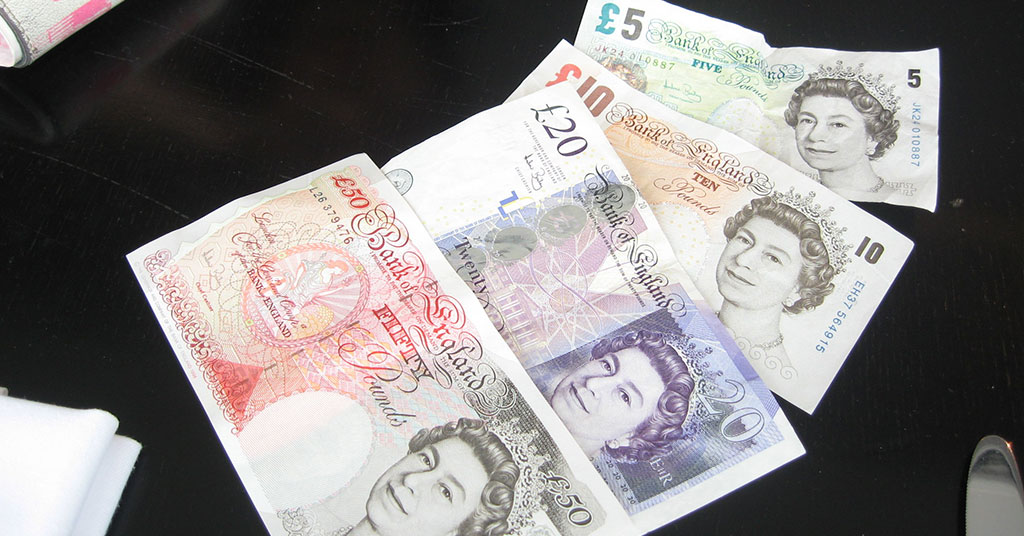
All printed lines and colors on the note must be sharp and clear. Source: flickr.com
Common features for £5 and £10
- See-through window
There’s a clear portrait of the Queen printed on a large see-through window on the note, with the words ‘£5 Bank of England’ or ‘£10 Bank of England’ twice around the edge.
- Foil patches
On the front side, below and above the see-through window, there are silver foil patches. When you tilt the note the words ‘Five’ or ‘Ten’ in the lower patch change to ‘Pounds’, and the image of the coronation crown in the upper patch becomes 3D. You will see a multi-colored rainbow effect on both patches.
- Polymer
The new notes are printed on polymer – thin and flexible plastic.
Read more about polymer banknotes here.
Common features for £20 and £50
- Watermark. Hold the note up to the light. It will reveal the Queen’s portrait and a bright £20 or £50 on both back and front sides.
- Metallic thread. A metallic thread appears as silver dashes on the back of the note. When the note is held against the source of bright light, the thread looks like a continuous dark line.
- See-through register. Hold the note up to the light to see colored irregular shapes that form the £ symbol. They are present on both sides.
£5 note
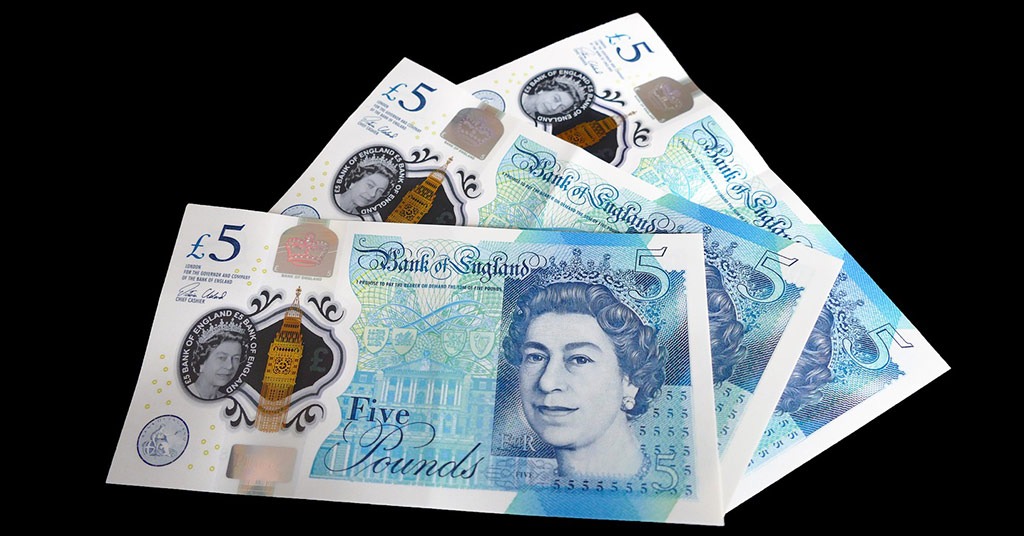
There is a detailed metallic image of the Big Ben over the see-through window. Source: pixabay.com
Big Ben. There is a detailed metallic image of the Big Ben over the see-through window. The foil is gold on the front and silver on the back. When you tilt the note, you will see a multi-colored rainbow effect.
Colored border. Around the edge of the see-through window is a colored border, which should change from purple to green while tilting the note. The £ symbol also undergoes the same color change. This effect can be seen on both sides of the note.
Blenheim maze. The Marlborough maze at Blenheim Palace Estate (Churchill’s birthplace) is the inspiration for the green foil printed on the back of the note.
£10 note
- Winchester Cathedral. There is a finely detailed metallic image of Winchester Cathedral over the see-through window. The foil is gold on the front and silver on the back. A multi-colored rainbow effect appears while tilting. The foil £ symbol in the window is silver on the front and copper on the back side.
- Quill. Next to the see-through window, there is a colored quill image, which changes from purple to orange when you tilt the note. You can see it on both sides of the note.
- Foil book. On the back of the note, a copper foil patch represents a book with the initial letters ‘JA’ that stand for Jane Austin.
£20 note

It’s been circulating since 2007. Source: unsplash.com
It is no wonder that this banknote has the most counterfeit duplicates. It’s been circulating since 2007 and will be replaced with the polymer variant only in the first half of 2020.
Its security features include:
- Holographic strip. The strip contains foil patches with changing holographic images. When you tilt the note, one hologram shows a colorful image of Adam Smith. The other changes between a multi-colored £ symbol and the number 20. The number 20 is also embossed on the strip, to the right of the Chief Cashier’s signature.
- Additional ultraviolet feature. You will see randomly spread bright red and green flecks on both sides of the note.
£50 note
This note is expected to be substituted by a polymer analog by the end of 2021. It will have a new character and a completely different design.
As of now, the specific proofs of genuineness are:
- Motion thread. The motion thread on the £50 note is woven into the paper. It has five small windows containing images of the £ symbol and the number 50. When you tilt the note from side to side, the images move up and down. When you tilt the note up and down, the images move from side to side and the number 50 and the £ symbol switch.
- Ultraviolet feature. Those five windows of the motion thread become bright green. The red and green flecks will appear at random positions
General information on British money for tourists
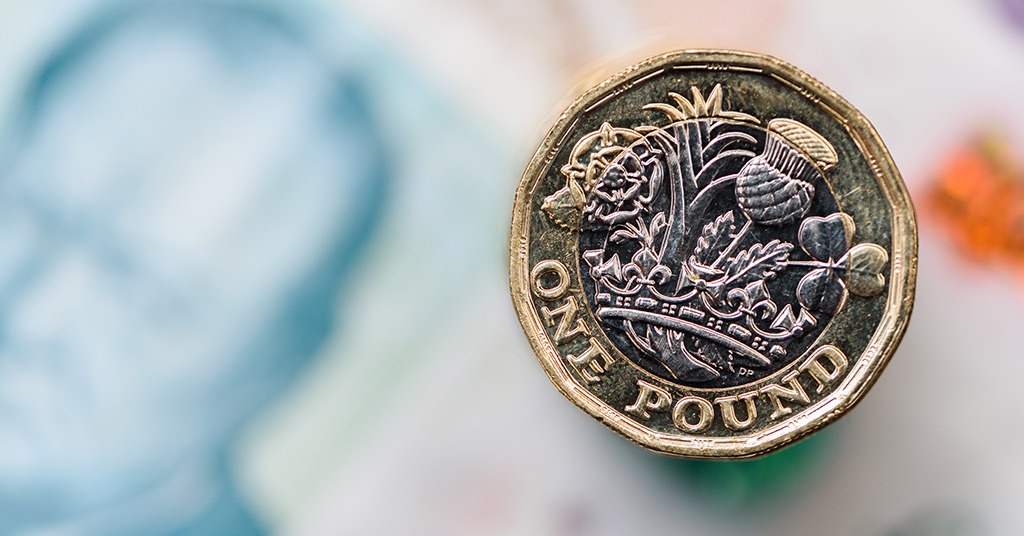
There are 100 pence to the pound. Source: shutterstock.com
There are 100 pence (p) to the pound (£). Notes come in denominations of £5, £10, £20 and £50. Coins come in 1p, 2p, 5p, 10p, 20p, 50p, £1 and £2.
You may often hear British people say “pee” rather than pence, as in 50p (50 pee). More colloquially, a pound is known as a “quid”, a five-pound note is a “fiver” and a ten-pound note is called a “tenner”.
Exchanging currencies is possible at numerous bureaux de change often located inside banks, travel agencies or Post Offices, as well as at airports and major train stations. The exchange rates may be more expensive at the places of large tourist crowds’ aggregation.
Contactless cards and digital wallets are widely used in the UK and many businesses accept them as payment, up to a limit of £30 per transaction. Nevertheless, contactless payments may incur an overseas transaction fee, so it is a good idea to check with your card issuer before tapping.



